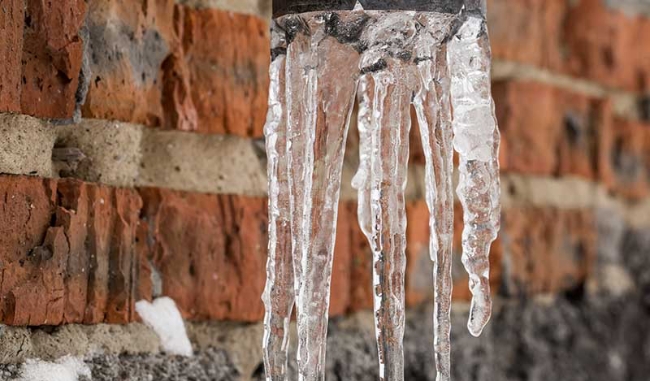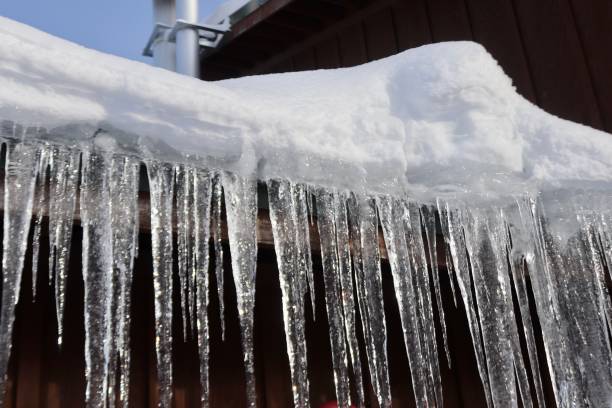Critical Approaches for Preventing Frozen Plumbing in Cold Weather
Critical Approaches for Preventing Frozen Plumbing in Cold Weather
Blog Article
What are your concepts about Helpful Tips to Prevent Frozen Pipes this Winter?

Winter can wreak havoc on your pipes, specifically by freezing pipes. Right here's how to prevent it from taking place and what to do if it does.
Intro
As temperature levels drop, the risk of frozen pipelines increases, potentially leading to pricey repairs and water damage. Understanding exactly how to prevent icy pipes is essential for house owners in cold climates.
Comprehending Frozen Pipelines
What causes pipelines to freeze?
Pipelines freeze when exposed to temperature levels below 32 ° F (0 ° C) for extended periods. As water inside the pipes ices up, it broadens, taxing the pipe walls and possibly causing them to rupture.
Threats and damages
Frozen pipelines can lead to water system disturbances, residential or commercial property damage, and costly repairs. Burst pipes can flooding homes and trigger considerable architectural damage.
Signs of Frozen Water Lines
Identifying icy pipelines early can prevent them from rupturing.
Just how to determine frozen pipelines
Try to find reduced water flow from taps, uncommon odors or noises from pipes, and visible frost on exposed pipes.
Prevention Tips
Shielding prone pipelines
Wrap pipes in insulation sleeves or make use of warmth tape to protect them from freezing temperatures. Focus on pipes in unheated or exterior locations of the home.
Heating techniques
Maintain indoor areas appropriately warmed, particularly areas with plumbing. Open cupboard doors to enable cozy air to distribute around pipes under sinks.
Protecting Exterior Plumbing
Garden tubes and exterior faucets
Disconnect and drain pipes garden tubes prior to wintertime. Set up frost-proof spigots or cover exterior taps with insulated caps.
What to Do If Your Pipes Freeze
Immediate actions to take
If you suspect frozen pipelines, maintain taps available to soothe pressure as the ice melts. Use a hairdryer or towels soaked in hot water to thaw pipelines gradually.
Long-Term Solutions
Architectural changes
Take into consideration rerouting pipes away from outside walls or unheated locations. Include extra insulation to attics, cellars, and crawl spaces.
Upgrading insulation
Purchase high-quality insulation for pipes, attics, and wall surfaces. Correct insulation aids preserve consistent temperature levels and minimizes the risk of icy pipes.
Verdict
Preventing frozen pipes needs proactive actions and quick responses. By comprehending the reasons, indications, and safety nets, homeowners can protect their pipes during winter.
Helpful Tips to Prevent Frozen Pipes this Winter
UNDERSTANDING THE BASICS: WHY PIPES FREEZE AND WHY IT’S A PROBLEM
Water freezing inside pipes is common during the winter months, but understanding why pipes freeze, and the potential problems it can cause is crucial in preventing such incidents. This section will delve into the basics of why pipes freeze and the associated problems that may arise.
THE SCIENCE BEHIND FROZEN PIPES
When water reaches freezing temperatures, it undergoes a physical transformation and solidifies into ice. This expansion of water as it freezes is the primary reason pipes can burst. As the water inside the pipe freezes, it expands, creating immense pressure on the walls. If the pressure becomes too great, the pipe can crack or rupture, leading to leaks and water damage.
FACTORS THAT CONTRIBUTE TO PIPE FREEZING
Low Temperatures: Extremely cold weather, especially below freezing, increases the risk of pipes freezing. Uninsulated or Poorly Insulated Pipes: Pipes located in unheated areas, such as basements, crawl spaces, or attics, are more prone to freezing. Insufficient insulation or lack of insulation altogether exacerbates the problem. Exterior Wall Exposure: Pipes running along exterior walls are susceptible to freezing as they encounter colder temperatures outside. Lack of Heating or Temperature Regulation: Inadequate heating or inconsistent temperature control in your home can contribute to frozen pipes. PROBLEMS CAUSED BY FROZEN PIPES
- Pipe Bursting: As mentioned earlier, the expansion of water as it freezes can cause pipes to burst, resulting in significant water damage.
- Water Damage: When pipes burst, it can lead to flooding and water damage to your property, including walls, ceilings, flooring, and personal belongings.
- Structural Damage: Prolonged exposure to water from burst pipes can compromise the structural integrity of your home, leading to costly repairs.
- Mold and Mildew Growth: Excess moisture from water damage can create a favorable environment for mold and mildew growth, posing health risks to occupants.
- Disrupted Water Supply: Frozen pipes can also result in a complete or partial loss of water supply until the issue is resolved.
WHY CERTAIN PIPES ARE MORE PRONE TO FREEZING
- Location: Pipes located in unheated or poorly insulated areas, such as basements, crawl spaces, attics, or exterior walls, are at higher risk of freezing.
- Exterior Pipes: Outdoor pipes, such as those used for irrigation or exposed plumbing, are particularly vulnerable to freezing as they are directly exposed to the elements.
- Supply Lines: Pipes that carry water from the main water supply into your home, including the main water line, are critical to protect as freezing in these lines can affect your entire plumbing system.
- Underground Pipes: Pipes buried underground, such as those connected to sprinkler systems or outdoor faucets, can be susceptible to freezing if not properly insulated.
https://busybusy.com/blog/helpful-tips-to-prevent-frozen-pipes-this-winter/

We are very involved in 6 Ways to Prevent Frozen Pipes and I'm hoping you enjoyed the blog post. Do you know about someone else who is enthusiastic about the subject? Please feel free to share it. Thank you for your time. Return soon.
Try Here Report this page